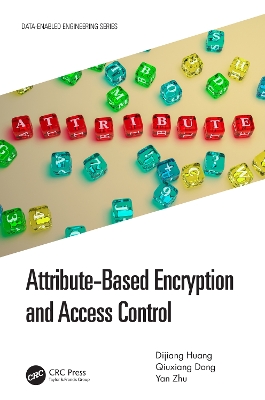Data-Enabled Engineering
2 total works
Attribute-Based Encryption and Access Control
by Dijiang Huang, Qiuxiang Dong, and Yan Zhu
This book covers a broader scope of Attribute-Based Encryption (ABE), from the background knowledge, to specific constructions, theoretic proofs, and applications. The goal is to provide in-depth knowledge usable for college students and researchers who want to have a comprehensive understanding of ABE schemes and novel ABE-enabled research and applications. The specific focus is to present the development of using new ABE features such as group-based access, ID-based revocation, and attributes management functions such as delegation, federation, and interoperability. These new capabilities can build a new ABE-based Attribute-Based Access Control (ABAC) solution that can incorporate data access policies and control into ciphertext. This book is also ideal for IT companies to provide them with the most recent technologies and research on how to implement data access control models for mobile and data-centric applications, where data access control does not need to rely on a fixed access control infrastructure. It’s also of interested to those working in security, to enable them to have the most recent developments in data access control such as ICN and Blockchain technologies.
Features
- Covers cryptographic background knowledge for ABE and ABAC
- Features various ABE constructions to achieve integrated access control capabilities
- Offers a comprehensive coverage of ABE-based ABAC
- Provides ABE applications with real-world examples
- Advances the ABE research to support new mobile and data-centric applications
Software-Defined Networking and Security
by Dijiang Huang, Ankur Chowdhary, and Sandeep Pisharody
This book provides readers insights into cyber maneuvering or adaptive and intelligent cyber defense. It describes the required models and security supporting functions that enable the analysis of potential threats, detection of attacks, and implementation of countermeasures while expending attacker resources and preserving user experience. This book not only presents significant education-oriented content, but uses advanced content to reveal a blueprint for helping network security professionals design and implement a secure Software-Defined Infrastructure (SDI) for cloud networking environments. These solutions are a less intrusive alternative to security countermeasures taken at the host level and offer centralized control of the distributed network.
The concepts, techniques, and strategies discussed in this book are ideal for students, educators, and security practitioners looking for a clear and concise text to avant-garde cyber security installations or simply to use as a reference.
Hand-on labs and lecture slides are located at http://virtualnetworksecurity.thothlab.com/.
Features
- Discusses virtual network security concepts
- Considers proactive security using moving target defense
- Reviews attack representation models based on attack graphs and attack trees
- Examines service function chaining in virtual networks with security considerations
- Recognizes machine learning and AI in network security

